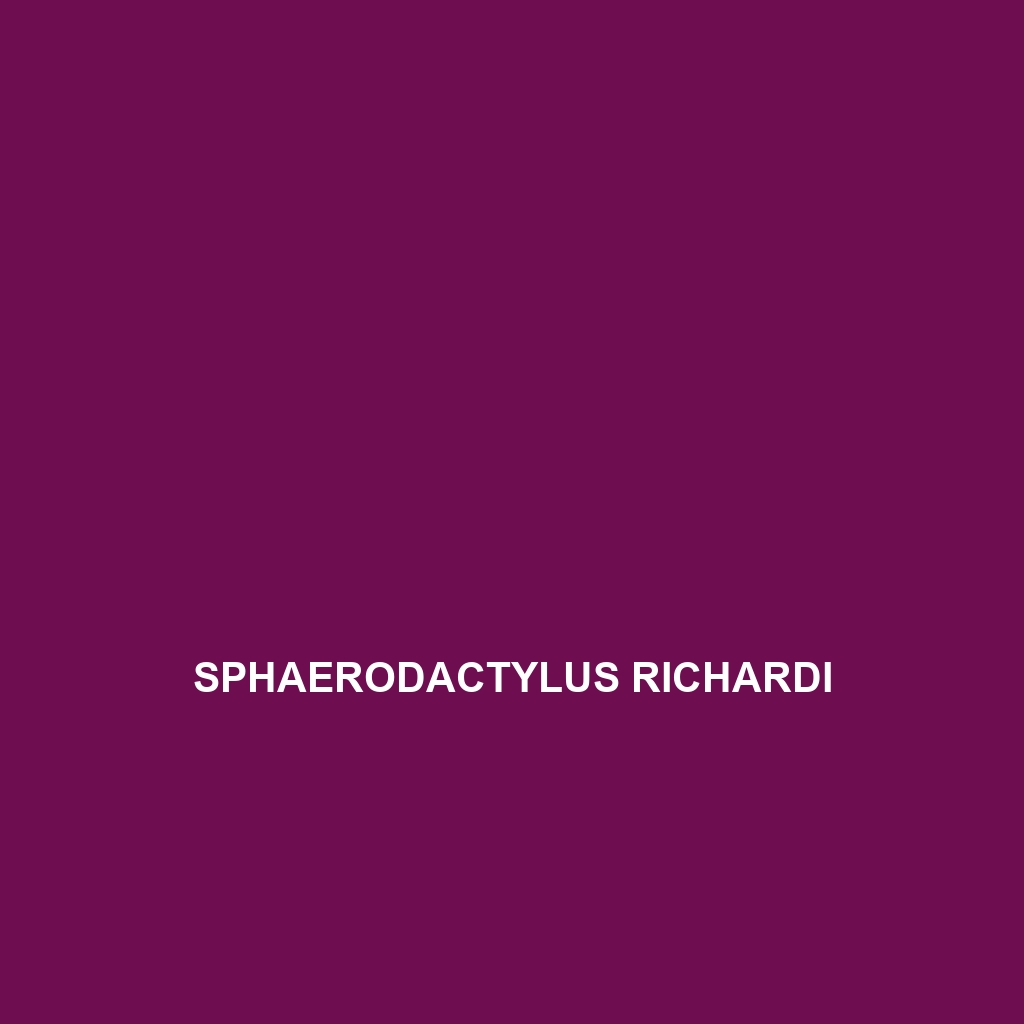Common Name
Sphaerodactylus richardi
Scientific Name
Sphaerodactylus richardi
Habitat
Sphaerodactylus richardi, commonly known as Richard’s sphaero, is predominantly found in the lush and vibrant tropical rainforests of the Caribbean, particularly in regions such as Haiti and the Dominican Republic. This species thrives in warm, humid climates where its environmental needs are met. It prefers habitats with dense vegetation, allowing for easy access to hiding spots and abundant insect prey. Richard’s sphaero is also observed in subtropical regions characterized by a mix of savannas and forest edges, showcasing its adaptability to various environmental conditions while remaining sensitive to habitat destruction.
Physical Characteristics
The Sphaerodactylus richardi exhibits distinct physical characteristics that make it a unique species within the Sphaerodactylus genus. Typically, these small lizards have an average body length of around 5 to 7 cm, with their size making them one of the smaller sphaerodactylid species. Their coloration varies widely, often presenting a blend of browns, yellows, and grays, which provide excellent camouflage against their natural environment. One of the most distinguishing features is their flattened bodies and broad heads, which further aid in their burrowing habits. The sphaero’s unique lamellae under their toes also allow for exceptional climbing abilities on various surfaces.
Behavior
The behavior of Sphaerodactylus richardi offers fascinating insights into their adaptation to the rainforest ecosystem. These lizards are primarily nocturnal, emerging during the cooler nighttime temperatures to hunt and forage. They display unique social interactions, often communicating through body language and scent marking. Mating rituals are particularly intriguing; males perform vibrant displays, showcasing their bright colors to attract females during the breeding season. Additionally, Richard’s sphaero exhibits territorial behaviors, defending their chosen areas from intruders, demonstrating their opportunistic yet competitive nature within their habitat.
Diet
The dietary habits of Sphaerodactylus richardi classify them as insectivores, primarily feeding on a variety of arthropods. Insects such as beetles, moths, and ants constitute their main food sources, which they hunt with remarkable agility. Their small size allows them to navigate through dense foliage effortlessly while using their acute sense of sight to detect movement. Occasionally, they may consume small plant matter, indicating a degree of omnivorous behavior, although their primary dependence remains on protein sources derived from insects to fulfill their nutritional needs.
Reproduction
The reproductive cycle of Sphaerodactylus richardi is characterized by distinct seasonal patterns. Mating typically occurs during the spring and summer months, coinciding with warmer temperatures and increased food availability. After a courtship display, females lay clutches of 1 to 2 eggs in moist, secluded areas of the forest floor, often under leaf litter. The gestation period lasts approximately 30 days, after which the hatchlings emerge fully formed and miniature replicas of the adults. Parental care is minimal, as the young are independent from birth and must learn to evade predators immediately.
Conservation Status
The conservation status of Sphaerodactylus richardi is currently classified as vulnerable due to habitat loss from deforestation, agriculture, and urbanization in its native range. The ongoing challenges to its population include environmental degradation and increasing human encroachment on its habitat. Conservation efforts are crucial to preserving this species, including habitat restoration projects and legal protections against poaching. Continued research and monitoring of its population trends are also necessary to guide effective conservation strategies.
Interesting Facts
One of the most interesting aspects of Sphaerodactylus richardi is its ability to adapt behaviors according to environmental pressures. For example, during periods of drought, these lizards have been observed to exhibit more nocturnal behaviors as a survival strategy to cope with daytime heat. Another fascinating fact is their remarkable climbing capabilities; Richard’s sphaero can scale trees and shrubs with ease, which allows them to access both food sources and safe hiding spots from predators. Their small size and agile movements make them adept at navigating complex habitats.
Role in Ecosystem
Sphaerodactylus richardi plays a vital ecological role within its habitat. As a predator of numerous insects, it helps maintain the balance of the insect population, preventing outbreaks that could adversely affect plant life. Additionally, through its foraging and nesting habits, this species contributes to soil aeration and nutrient cycling, benefiting the overall health of the forest ecosystem. Moreover, their presence serves as an essential food source for various larger predators, positioning them as a crucial link in the food web of their rainforest habitats.
